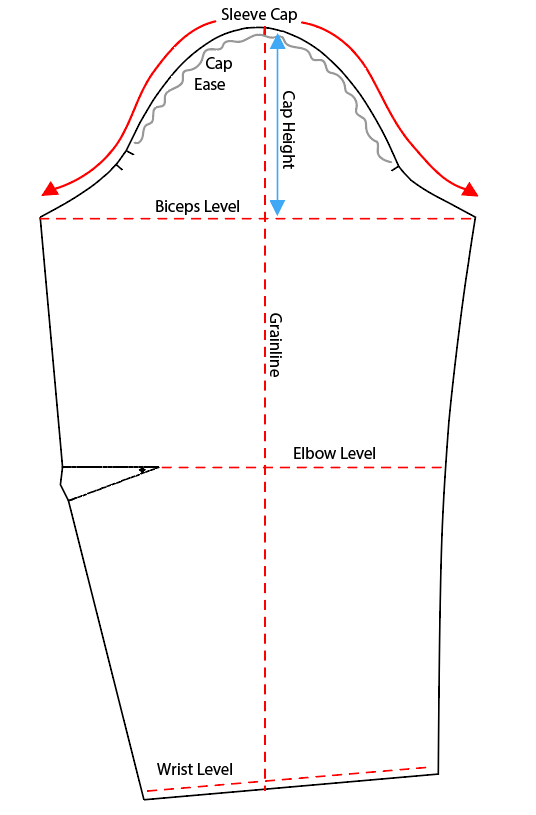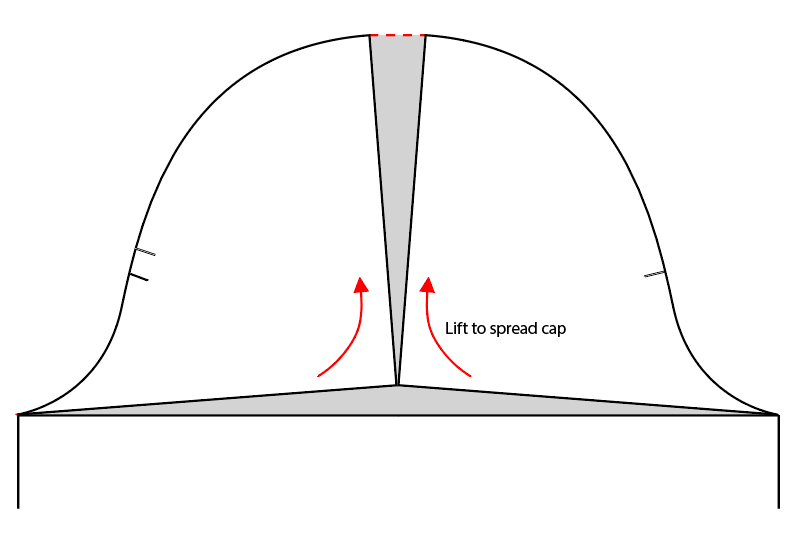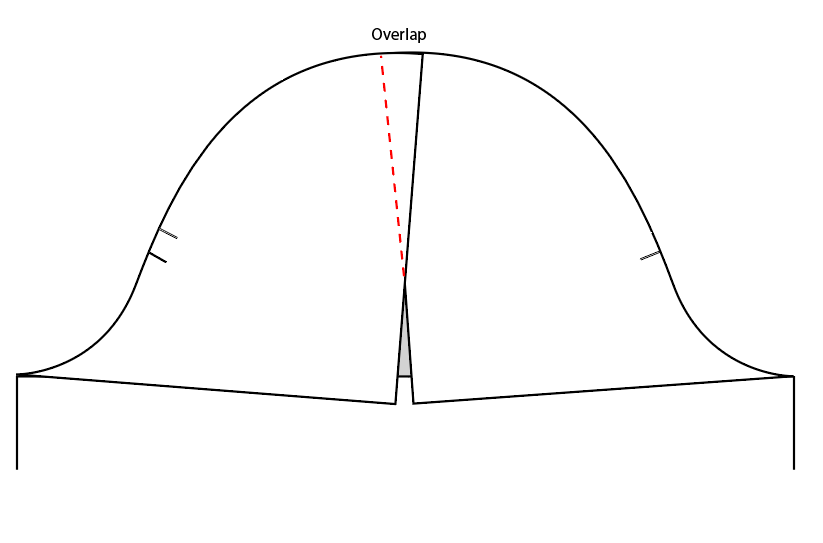How to Adjust Sleeve Cap Ease

Learn how to adjust sleeve cap ease to achieve the perfect fit for any garment!💗
Have you ever felt frustrated with your project when everything was going perfectly, but the sleeves turned into a total disaster? This is usually due to sleeve cap ease problems. In this post, I’m going to share how to adjust the sleeve cap ease (either increase or decrease) to make it fit perfectly into the armhole!😃
Overview: Sleeve Terminology
First of all, let’s learn some common sleeve terms that are necessary to know:

- Grainline: The straight grain of the sleeve, running from the top of the cap to the wrist level.
- Biceps Level: The widest part of the sleeve, dividing the cap from the lower sleeve.
- Sleeve Cap: The curved top section of the sleeve above the biceps line.
- Cap Height: The distance from the biceps level to the top of the sleeve cap along the grainline.
- Elbow Level: The point on the sleeve aligned with the elbow’s articulation.
- Wrist Level: The opening at the end of the sleeve for the hand.
- Cap Ease: The amount of extra fabric, ranging from 0 to 1 1/2 inches, between the front and back notches.
What is Sleeve Ease and Why Do We Need It?
Sleeve ease refers to the extra fabric added to the sleeve cap to ensure a comfortable and functional fit. This ease allows for better movement and flexibility in the arm, preventing the sleeve from feeling too tight or restrictive.
The sleeve cap ease is the difference between the armhole measurement and the sleeve itself. The sleeve can never be smaller than the armhole; it can be the same size, with no ease at all, or it can be larger. The difference between the two is the quantity of sleeve cap ease. Based on various textbooks and pattern making resources, it’s commonly recommended to have between 1 to 2 inches of cap ease. However, in my personal industrial experience, we typically add minimal ease (approximately 1/2 inch) to ensure a smoother sleeve assembly process and to prevent puckering.
Proper sleeve ease is crucial for achieving a well-fitted garment, as it helps accommodate the natural shape and movement of the body. Different fabrics require different amounts of ease: for example, leather patterns require no ease, while woven wool garments need a substantial amount of ease. Without adequate ease, sleeves can cause discomfort and limit mobility, while too much ease can result in a loose, ill-fitting garment. Understanding and adjusting sleeve ease is essential for creating perfectly fitted sleeves.
How to Adjust Sleeve Cap Ease
Even when the cap ease is correct, issues like puckering resembling a puff sleeve or the sleeve pulling away from the side seam can still occur. Addressing these problems requires specific adjustments, and the method below is often considered the easiest and most straightforward solution.
To increase cap height, follow these steps:

- Cut along the grainline from the top of the sleeve cap down to the biceps level.
- Cut from the biceps level to the corners of the front and back sleeve, being careful not to cut through the underarm points.
- Gently lift and spread the cut sections to add the extra amount of ease needed.
- Now, trace the new sleeve shape, and ensure all adjustments are accurately aligned. Transfer the notches to the new sleeve accordingly.
To decrease cap height, follow these steps:

- Cut along the grainline from the top of the sleeve cap down to the biceps level.
- Cut from the biceps level to the corners of the front and back sleeve, being careful not to cut through the underarm points.
- Gently lift and overlap the cut sections to eliminate the excess ease.
- Now, trace the new sleeve shape, and ensure all adjustments are accurately aligned. Transfer the notches to the new sleeve accordingly.
Conclusion
In conclusion, mastering sleeve cap ease can be the first step to achieving a better-fitted, professional-looking garment. Whether you’re adjusting for comfort or style, these techniques will empower you to tackle sleeve challenges with confidence. Happy sewing, and enjoy creating your perfect sleeves!
Got Questions? Feel free to shoot us an email through the contact form.
